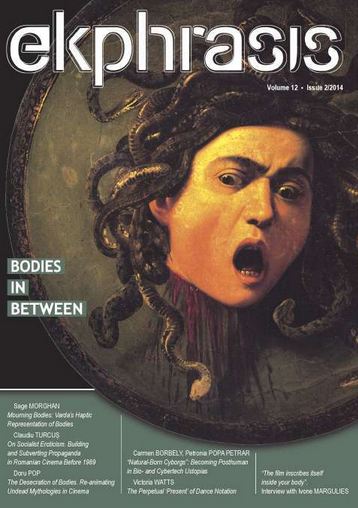Haneke’s Amour: Towards a Cinematic Phenomenology of the Misfit
Haneke’s Amour: Towards a Cinematic Phenomenology of the Misfit
Author(s): Laura Tușa IleaSubject(s): Theatre, Dance, Performing Arts
Published by: Universitatea Babeş-Bolyai, Facultatea de Teatru si Televiziune
Keywords: misfit; materialist; phenomenology; lived embodiment; autonomy
Summary/Abstract: This essay examines Michael Haneke’s film Amour through a conceptual migration: it shifts the accent from disability, lack of autonomy, and absence of self-determination to the idea of misfit. Following Garland-Thomson, I suggest that this concept implies both multiple lived embodiments and a questioning of the notion of singularized disabled body. Viewed from the perspective of Deleuzian disability studies, Anne’s strokes and her return to the defenseless state of childhood do not allow for any affirmative account. The immanence of life (Deleuze) appears in this case as a degraded state of being, as a disruption of the parameters that constitute selfhood. The paper argues that a new, materialist, aesthetico-political approach to Haneke’s film, centering on the concept of misfit on the one hand, and foregrounding the film’s surreal aesthetic on the other hand, allows for an affirmative, non-dualist reading of this work. The protagonists’ closed environment – cinematically enhanced through a stifling and oppressive atmosphere – seems to blur distinctions between death and life. A key notion here is that of “intra-active becoming” as defined by Karen Barad, a concept that allows us to situate the materiality of the misfit, as well as vulnerability and dependence in the materiality of the world. Anne and Georges may thus be seen as misfits who are made and unmade through, and with the world’s topological becoming (including its reconfiguring of injustice and discrimination).
Journal: Ekphrasis. Images, Cinema, Theory, Media
- Issue Year: 12/2014
- Issue No: 2
- Page Range: 70-78
- Page Count: 9

